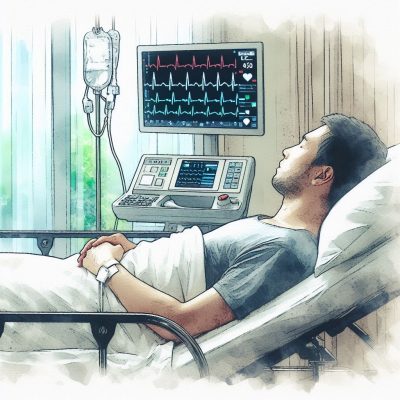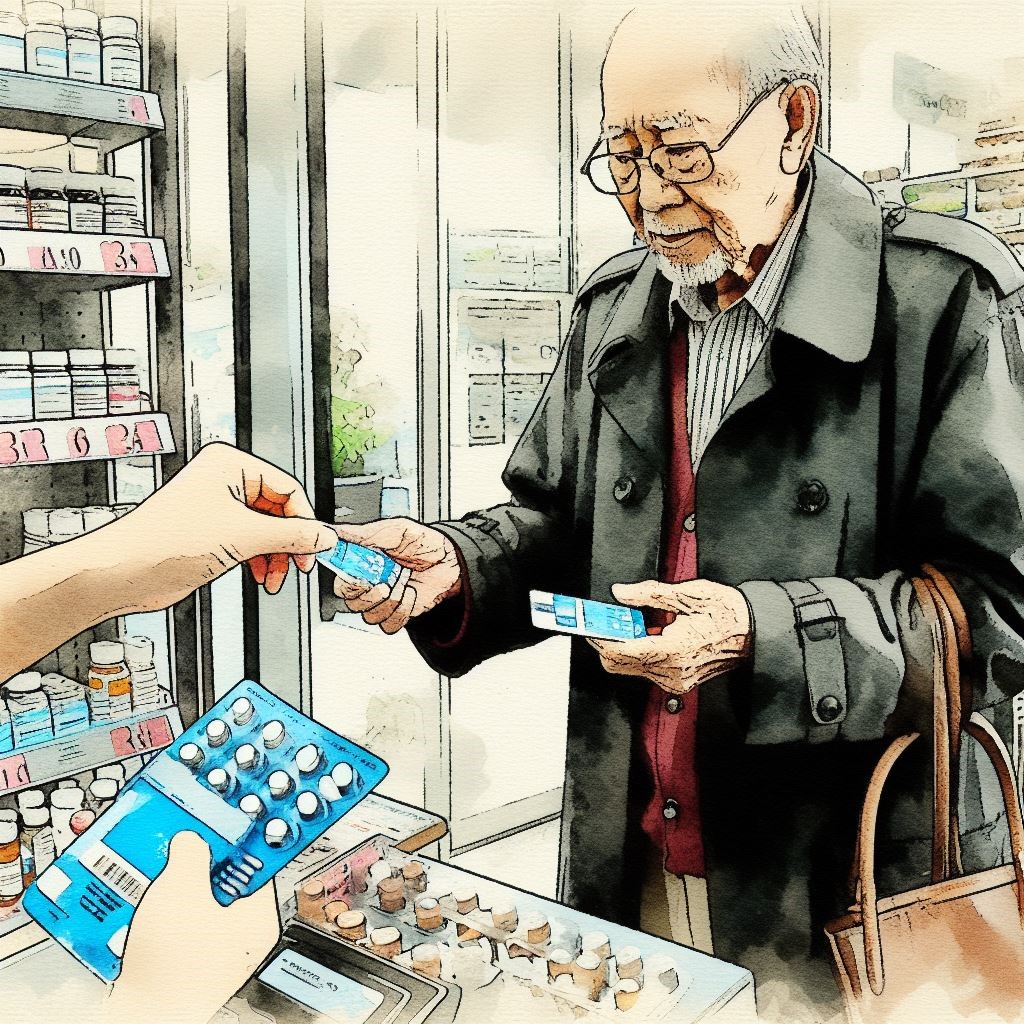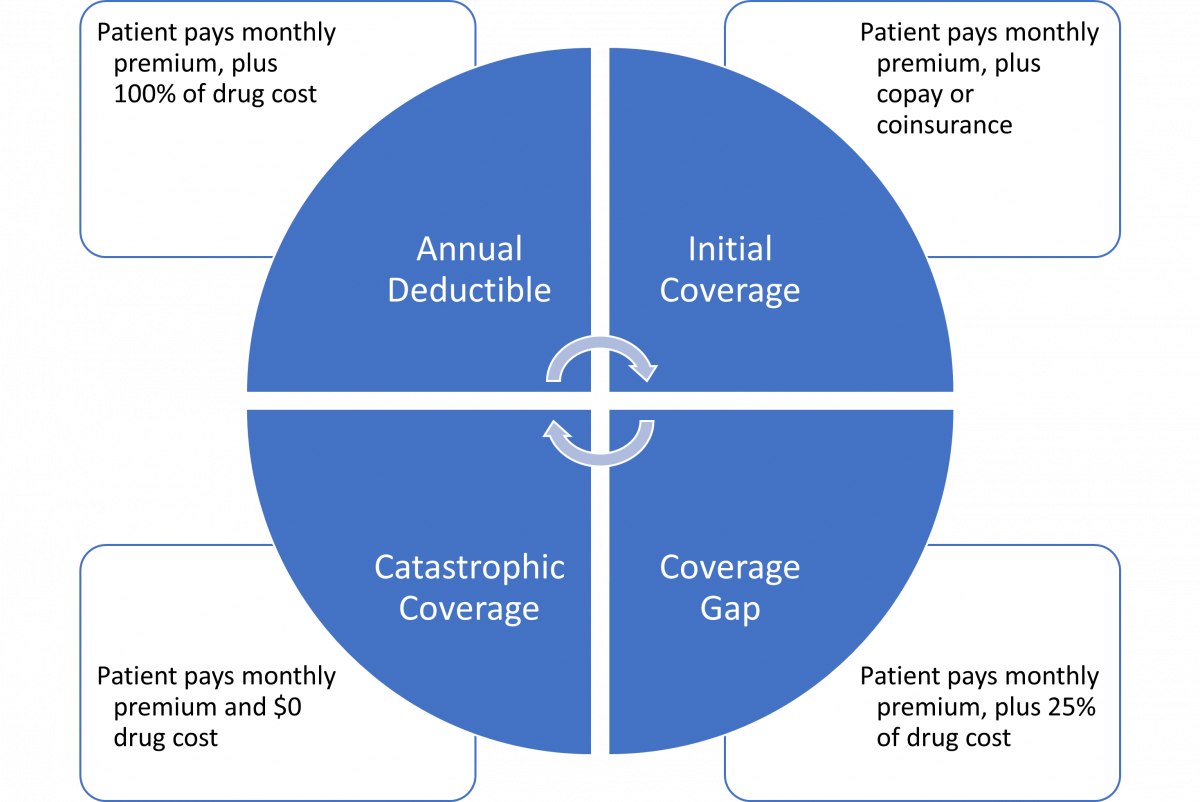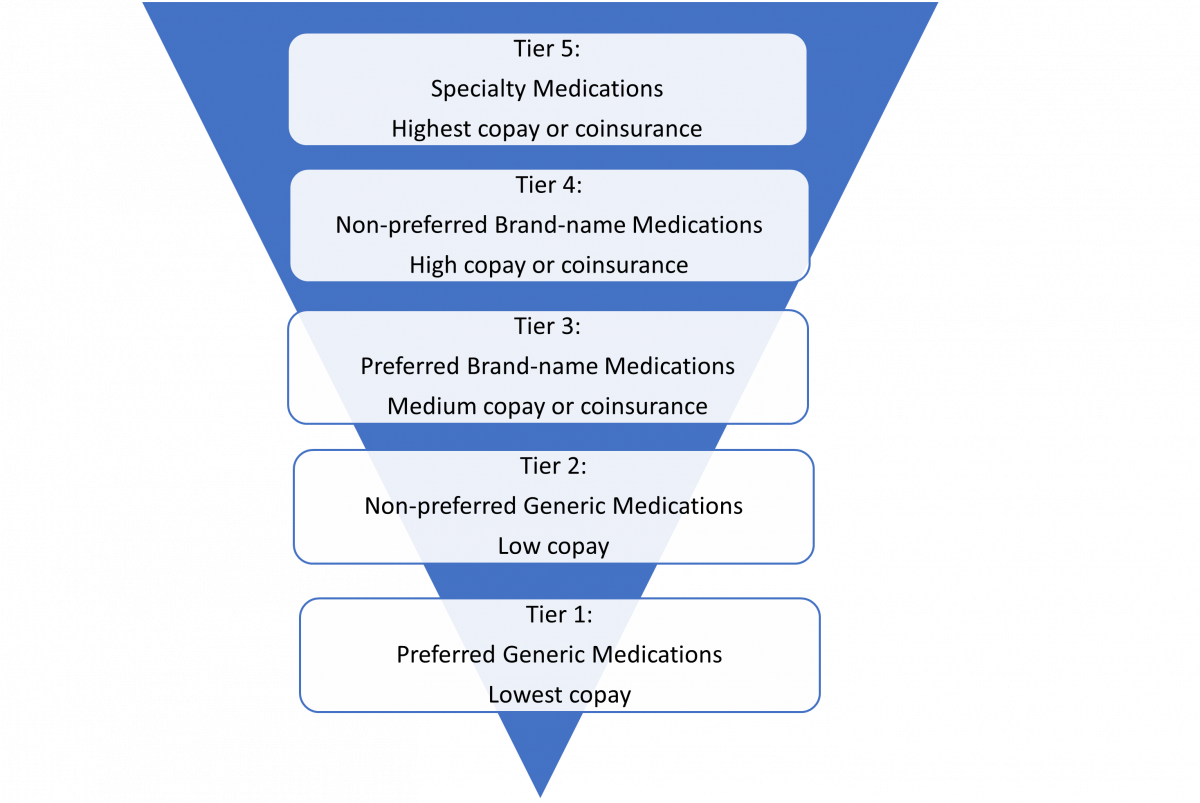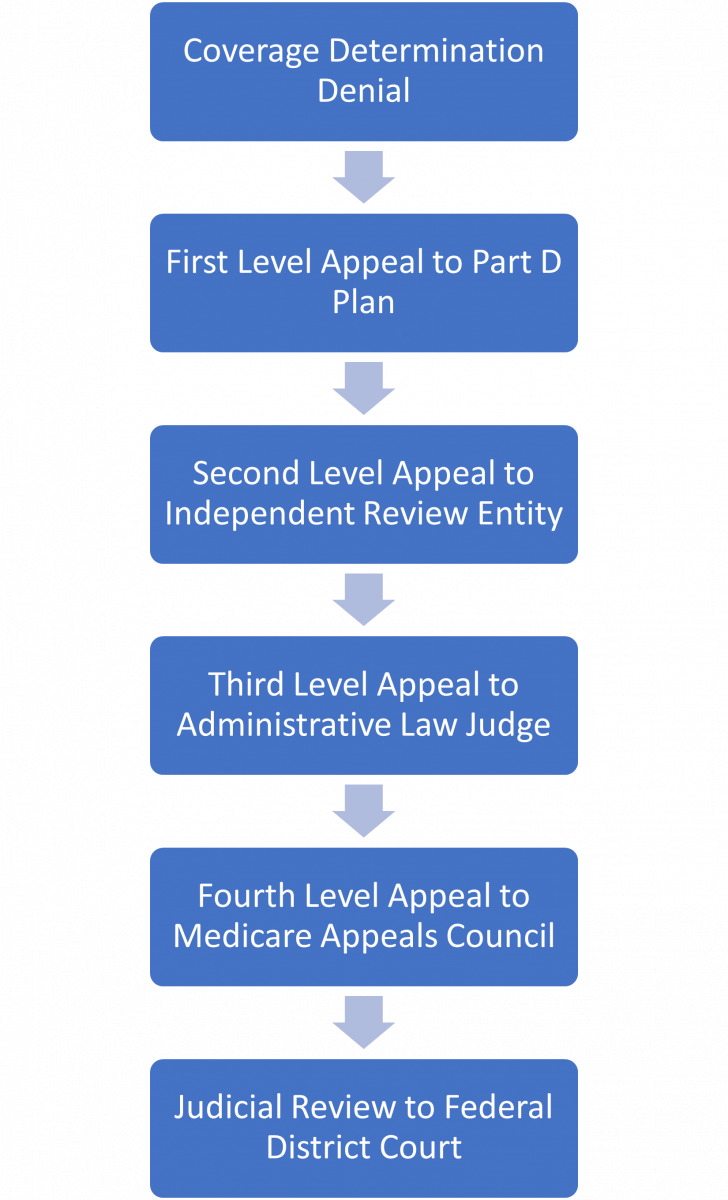Learning Objectives
After completing this application-based continuing education activity, pharmacists will be able to
| · Describe the significance of the availability of each recently released over-the-counter medication or device |
| · List the common uses or indications for each over-the-counter medication or device |
| · Explain the directions for use for each over-the-counter medication or device |
After completing this application-based continuing education activity, pharmacy technicians will be able to:
| · Describe the significance of the availability of each recently released over-the-counter medication or device |
| · List the common uses or indications for each over-the-counter medication or device |
| · Explain the directions for use for each over-the-counter medication or device |

Release Date: June 1, 2024
Expiration Date: June 1, 2027
Course Fee
Pharmacists: $4
Technicians: $2
There is no funding for this CE.
ACPE UANs
Pharmacist: 0009-0000-24-028-H01-P
Pharmacy Technician: 0009-0000-24-028-H01-T
Session Codes
Pharmacist: 24YC28-VXK44
Pharmacy Technician: 24YC28-XKV64
Accreditation Hours
1.0 hours of CE
Accreditation Statements
| The University of Connecticut School of Pharmacy is accredited by the Accreditation Council for Pharmacy Education as a provider of continuing pharmacy education. Statements of credit for the online activity ACPE UAN 0009-0000-24-028-H01-P/T will be awarded when the post test and evaluation have been completed and passed with a 70% or better. Your CE credits will be uploaded to your CPE monitor profile within 2 weeks of completion of the program. |  |
Disclosure of Discussions of Off-label and Investigational Drug Use
The material presented here does not necessarily reflect the views of The University of Connecticut School of Pharmacy or its co-sponsor affiliates. These materials may discuss uses and dosages for therapeutic products, processes, procedures and inferred diagnoses that have not been approved by the United States Food and Drug Administration. A qualified health care professional should be consulted before using any therapeutic product discussed. All readers and continuing education participants should verify all information and data before treating patients or employing any therapies described in this continuing education activity.
Faculty
Marsha A. McFalls, PharmD, MSEd, RPh,
Assistant Professor of Pharmacy Practice
Duquesne University School of Pharmacy
Pittsburgh, PA
Faculty Disclosure
In accordance with the Accreditation Council for Pharmacy Education (ACPE) Criteria for Quality and Interpretive Guidelines, The University of Connecticut School of Pharmacy requires that faculty disclose any relationship that the faculty may have with commercial entities whose products or services may be mentioned in the activity.
Dr. McFalls does not have any relationships with ineligible companies.
ABSTRACT
Demands on pharmacists have continued to increase over the past few years. Pharmacists feel confident about dispensing medications, but some do not feel equally as confident when recommending over-the-counter medications. It is important for pharmacists to stay informed about new over-the-counter medications and be able to counsel patients on the selection and use of these products. New over-the-counter medications released in the past few years include birth control, devices that detect heart arrhythmias, allergy remedies, and products to treat opioid overdoses.
CONTENT
Content
INTRODUCTION
Self-care involves the ability of a patient to diagnose and treat their own illness without the help of a health care practitioner. Ninety-six percent of patients believe that over-the-counter (OTC) medications make it easy to care for these self-care conditions.1 Patients save $56.8 billion annually when they use OTC/nonprescription medications instead of prescription medications.2 Pharmacists and pharmacy technicians are frequently consulted about different self-care conditions and the appropriate choice of OTC medications and devices.
PAUSE AND PONDER: Would you be able to recognize the symptoms of an overdose?
Naloxone Nasal Spray
The Center for Disease Control and Prevention (CDC) reported that there were 106,363 opioid-related deaths during a 12-month period ending in July 2023.3 The Food and Drug Administration (FDA) originally approved Naloxone to reverse an opioid overdose in 2015 as prescription only.4 It moved to nonprescription/OTC status in March 2023 through the FDA’s Rx-to-OTC switch process.5,6 The manufacturer drove this change to nonprescription status by providing data showing that the drug is safe and effective and that consumers could understand how to use the product based on the proposed labeling.5
Naloxone (Narcan, Emergent BioSolutions) was the first OTC medication approved to reverse opioid overdose in community settings. Patients (who use prescription or illegal opioids), caregivers, family members, or friends can now purchase naloxone in community pharmacies, grocery stores, and online without a prescription.5,7 Based on Federal law, people of any age can purchase naloxone, but state laws may differ. 7 Table 1 describes symptoms of an opioid overdose. The overdose can result from use of fentanyl, heroin, morphine, oxycodone, and other opioids. Naloxone works by blocking the opiate receptors in the brain so that the opiate cannot exert its effects. If it is not an overdose situation, patients will experience no effect.5
| Table 1. Opioid Overdose Symptoms5 |
| · Body aches
· Diarrhea · Fever · Goose bumps · Increased blood pressure · Increased heart rate · Nausea or vomiting · Restlessness or irritability · Sweating |
Naloxone nasal spray contains only one dose and is not reusable. It is available in a 4 mg dose. Observers or caregivers should administer naloxone as soon as possible when they suspect an overdose. The observer/caregiver should lay the patient down on his or her back with their neck supported and the head tilted back. The caregiver should remove the tab from the nasal spray. It does not need to be primed. Caregivers place their thumb on the bottom of the red plunger and the first and middle fingers around the nozzle. The caregiver then places the tip of the nasal spray inside the patient’s nose. They should press the red plunger to administer the medication. They can give additional doses every two to three minutes if needed. They should also call emergency services immediately.
During an overdose situation, the patient could experience withdrawal effects such as nausea, vomiting, sweating, tremors, shivering, or irritability.8 The cost is approximately $45 for two single doses.9
A Naloxone Nasal Spray Training Device is available for anyone that wants to learn who to administer the nasal spray. The kit contains instructions and two training devices. It does not contain active medication.10
In July 2023, the FDA approved a second OTC naloxone product. RiVive (Harm Reduction Therapeutics) contains 3 mg naloxone. This is also a Rx-to-OTC change supported by evidence demonstrating that the naloxone levels that reach the blood stream are similar in the prescription and nonprescription product.11 The approximate cost is $36 for a twin pack.
PAUSE AND PONDER: How would you respond if a 13-year-old girl approached you and began asking questions about the norgestrel birth control? What questions would you ask?
Norgestrel 0.075 mg Tablets
In 2019, the CDC reported that 35.7% of pregnancies were unintended in women aged 15 to 44.12 Unintended pregnancies may result in negative consequences due to a lack of early prenatal care and increased risk of preterm delivery.13 Having norgestrel available without a prescription may help to reduce unintended pregnancies.14
Opill (Perrigo) is the first nonprescription oral contraceptive. Opill tablets contain norgestrel 0.075 mg, which is a progestin, or a form of progesterone. It is only used to prevent pregnancy; it does not protect against sexually transmitted diseases such as HIV. The American College and Obstetricians and Gynecologists and the American Medical Medication Association have endorsed this product. Women of any age can purchase Opill in community pharmacies, grocery stores, and online.14,15
Norgestrel thickens the mucus in the cervix, preventing sperm from reaching the egg. The progestin may also inhibit ovulation, but not in all cases. Each pack contains 28 tablets, 24 active tablets that contain progestin and four inactive tablets that do not contain progestin. Norgestrel will begin working two days after the patient starts a pack and patients must take one tablet at the same time daily to be effective.
Missing tablets or not taking the tablets at the same time every day may reduce the birth control’s effectiveness and increase the chance of pregnancy. If a patient fails to take the tablet by three hours or more of her scheduled time, she should take the next tablet as soon as possible. In this case, she and her partner should also use condoms (or another backup method of birth control) or avoid sex (vaginal) for the next two days.15 Once a pack is completed, patients should start the next pack without any break in between.16 With typical use, the pregnancy rate is 9 in 100 during the first year of progestin-only tablets and for perfect use (never forgetting to take a tablet and taking the same time every day), the pregnancy rate is 1 in 100 women.15
Patients may experience side effects such as headache, dizziness, nausea, fatigue, cramps, or bloating.16 Progestin-only medications are contraindicated in women who have a history of lupus or breast cancer. Opill will be available on store shelves in March 2024. The suggested cost is $19.99 for a one month supply.17
OTC Hearing Aids
Approximately 30 million adults in the United States have some type of hearing loss.18 OTC hearing aids are credited for improving the quality of life in patients, according to a study in the Journal of the American Medication Association.19 The study used a previously validated model (Decision model of the Burden of Hearing Loss Across the Lifespan: DeciBHAL-US) and simulated the projected probability of hearing loss and the use of traditional and OTC hearing aids in 40- and 50-year old males and females. Use of OTC hearing aids resulted in a $70 to $200 savings over a lifetime. Patients also began using OTC hearing aids earlier in life compared to traditional hearing aids (77.6 versus 78.9 years respectively).19 The OTC Hearing Aid Act provided the opportunity for patients to purchase OTC hearing aid devices without a medical examination or the necessity of being fitted by a hearing aid specialist.
OTC hearing aids are approved for adults 18 years of age and older and can be purchased online or in stores.18 OTC hearing aids are appropriate for patients with mild or moderate hearing loss. They are not appropriate for severe or profound hearing loss. OTC hearing devices have limits on the maximum output and would not treat severe hearing loss appropriately. Table 2 provides questions that a pharmacist might ask a patient regarding use of OTC hearing aids.
| Table 2. Questions Pharmacists Should Ask Patient about OTC Hearing Aids 20
|
| · Are you 18 years or older?
· Why do you think you need a hearing aid? · Have you had your hearing tested either by a professional or by using an online tool? · Do sounds appear muffled? · Do you have trouble hearing in a group or a noisy area? · Do you turn the television up to an excessively high level? |
Patients wear OTC hearing aids behind or in the ear canal; implantation is not required. Sound is amplified in the ear canal and moved to the inner ear, where processing and transmission to the brain occurs.18
Patients should first test their hearing by using an online resource that is provided on the product’s website. Once the results are provided, patients can select the best product for their needs using online product selection tools, based on their brand name choice. Table 3 lists features of some OTC hearing devices.21
| Table 3. Features of some OTC Hearing Devices 21 |
| · Advanced acoustics
· Bluetooth streaming · Hands-free phone calling · Rechargeable · Water resistant |
Brands include Jabra Enhance, Audicus, and MDHearing. Costs range from $200 to $1000 per pair.22 Some health insurance companies may provide coverage for OTC hearing devices based on specific brands.23
Lidocaine 4% Patch
Lidocaine is a topical anesthetic and works by inhibiting nerve impulse conduction. It provides a numbing sensation and is used to treat minor pain. Areas that can be treated include the back, neck, shoulders, and knees/elbows.24 Lidocaine patches are not appropriate for areas of inflammation.25
Lidocaine patches can be used on patients 12 years of age and older. Patients apply the patch to the affected area of the skin every six to eight hours and should not exceed three applications per day.1 The patch may fall off if exposed to water, so waiting until the patch is off is the best time to shower or swim. Patches should not be applied to damaged or broken skin. The patch should not be covered with a bandage or a heating pad because too much lidocaine may be absorbed through the skin.25
After the patch is removed, it can be discarded in the trash after it’s folded in half (adhesive side in).25 Common side effects include warmth or stinging.26 This product should not be used longer than seven days.
Brand names include Salonpas (lidocaine 4%) Pain Relieving Gel Patch (approximate cost is $11 for 6 patches) and Aspercreme (lidocaine 4%) Lidocaine Pain Relief Patch (approximate cost is $10 for 3 patches).24 Pharmacists and technicians should pay careful attention to brand name products with different ingredients. Salonpas Pain Relieving Patch contains camphor, methyl salicylate, and menthol.
Diclofenac Sodium 1% Gel
Diclofenac topical gel was also changed to nonprescription through the Rx-to-OTC switch process. The FDA approved it as a prescription in 2007 and approved the move to nonprescription status in 2020.27
Voltaren (Haleon) is a nonsteroidal anti-inflammatory (NSAID) gel, which means that it reduces prostaglandins, which are often responsible for inflammation. It is approved for the treatment of arthritis pain in the hand, wrist, elbow, foot, ankle, or knee in adults older than 18 years. It is not approved for sprains, strains, or sport injuries.27
Diclofenac relieves joint pain and stiffness.1 Dosing is based on the area of application. Patients apply 2.25 inches to the upper body (hand, wrist, elbow) and apply 4.5 inches to the lower body (foot, ankle knee). The dose is measured using an enclosed dosing card.
Diclofenac comes with an easy twist cap, which is helpful for patients with arthritis. The gel should be rubbed into the affected area up to four times a day for up to 21 days.28 Voltaren does not feel greasy and has a clean scent, compared to other topical preparations used to treat joint pain and stiffness. Common side effects include mild skin irritation. Patients who are allergic to aspirin should not use diclofenac topical gel.27 Diclofenac has limited systemic absorption and provides pain relief at the site of application.29 Diclofenac topical gel does not work immediately. Patients may not notice relief for one week.27
The cost is approximately $19 for a 3.5 oz tube.30
PAUSE AND PONDER: What symptoms would patients experience if they thought they have atrial fibrillation?
KardiaMobile
KardiaMobile (Alivecor) is used as a personal electrocardiogram (ECG), which measures the electrical activity in the heart. It is FDA-cleared. KardiaMobile is a single-lead ECG used to detect common arrhythmias such as atrial fibrillation, bradycardia, and tachycardia in 30 seconds.31 More than 454,000 hospitalizations occur each year in the United States due to atrial fibrillation.32
The KardiaMobile device is the size of a credit card and pairs or communicates with a smartphone. Patients open the Kardia app on their smartphone and press “Record now.” The patient should place the KardiaMobile device near the smartphone so that the two can connect. The patient places two fingers on each of the pads on the KardiaMobile device. After a few seconds, the results appear in the Kardia app. Patients can save the results or email them to a health care practitioner.31 Patients also have access for one year to KardiaCare, which is a service that includes ECG evaluations by cardiologists and monthly reports.33
The sensitivity and specificity for atrial fibrillation are 92% and 95% respectively and 85% and 83% for normal sinus rhythm.34
The Apple Watch also provides a similar service for the detection of heart arrhythmias. According to a study conducted in 2022, the Apple Watch and KardiaMobile can both detect rhythm and heart rate issues but the KardiaMobile had a nonsignificant trend toward better accuracy and rhythm detection.32
The approximate cost for the KardiaMobile device is $79.31
Azelastine HCl 0.15% Nasal Spray
Azelastine (Astepro, Bayer) is approved for the temporary relief of nasal congestion, runny nose, and sneezing due to indoor and outdoor allergies. This is the first available OTC antihistamine nasal spray. It is steroid free and approved for adults and children 6 years of age and older.35 About 25.7% percent of adults and 18.9% of children have seasonal allergies.36
Azelastine is an H1-receptor antagonist that prevents histamine from activating the histamine receptor and producing symptoms such as nasal congestion, runny nose, and sneezing. Patients should prime the spray before using it by pumping the spray until a fine mist comes out.37 Before using the spray, they must blow their nose to clear the nostrils and tilt their head downward and insert the tip ¼” to ½” into the nostril. Patients then press the pump once and sniff gently.38
Children 6 to 11 years of age should use one spray in each nostril twice daily. Children 12 years of age and older and adults should use one or two sprays in each nostril once or twice daily. Common adverse effects include runny nose, headache, and bitter taste. If patients experience drowsiness, they can use the spray at bedtime (and this is a good counseling point). The labeling recommends avoiding azelastine with alcohol or sedatives. Patients should experience relief within the first three hours of the dose.1
If the nozzle is clogged, the patient should unscrew the spray pump unit. The patient should fill a bowl or container with warm water and soak the nozzle and pump the nozzle several times under water to clear the clog. Finally, the patient should let the nozzle dry before putting it back on the bottle. The product will need to be primed again before the next use.38
The cost is approximately $24 for 120 metered sprays.39
Olopatadine Hydrochloride 0.1%
Olopatadine (Pataday, Alcon) is used to treat itchy, red eyes caused by ragweed, grass, animal hair, and pollen allergies.40 Forty percent of the population has experienced itchy, red eyes due to allergies.41 Olopatadine is a mast cell stabilizer, which prevents histamine from forming during the allergic cascade.27 Patients 2 years of age and older can use this product. The dose is one drop in the affected eye twice daily every six to eight hours. Reminding patients to remove contacts before use and wait 10 minutes after using the drops before reinserting them is a key counseling point.42 Patients should stop using the product if they experience changes in vision, increased eye redness, or eye pain.27 The cost is approximately $20 for a 5 mL bottle.42
Pataday (olopatadine 0.2%) Once Daily Relief and Pataday (olopatadine 0.7%) Once Daily Relief Extra Strength are also available as nonprescription products.43
Mometasone Furoate 50 mcg Nasal Spray
Mometasone furoate (Nasonex, Perrigo) is used to treat allergies, such as hay fever, that produces symptoms such as nasal congestion, runny and itchy nose, and sneezing.44 Mometasone is a corticosteroid.40 It blocks the release of substances that produce inflammation in the body. Nasonex can be used in patients 2 years of age and older. It is the first nonprescription nasal steroid and is full prescription strength.40
As with many other nasal products, the steps for administration start with shaking mometasone furoate before each use and executing a priming spray before the first use. The patient should
- insert the tip of the bottle in the nostril using a finger to hold the other nostril closed
- breathe in and spray at the same time
- repeat the process in the other nostril
- avoid blowing their nose right after using the nasal spray.44
Patients 2 to 11 years of age should use one spray in each nostril once daily and patients two years of age and older should use two sprays in each nostril once daily. Stinging of the nasal passages is a common side effect. The product must be discarded after 75 days from the first use, even if product remains in the bottle.44 Pharmacists and pharmacy technicians can remind patients to note the day they start using the product and/or the day when it needs to be discarded on the label. The cost is approximately $15 for 60 sprays.45
Ivermectin 0.5% Lotion
Approximately 6 to 12 million cases of head lice occur each year. Children between the ages of 3 and 11 years are most commonly affected.46 Ivermectin was originally available by prescription only. In 2020, the manufacturer started the process to change the classification to nonprescription. Ivermectin lotion is no longer available as a prescription.47
Head lice are parasites that survive by feeding on human blood. Lice are spread by person-to-person contact in close environments. Adult head lice are between 2 to 3 mm in length and move by crawling; they cannot hop or fly.46 Commons symptoms of head lice include itching on the head and scratching behind the ears.48
Ivermectin 0.5% lotion (Sklice, Azurity Pharmaceuticals) is used to treat head lice and nits and is approved for children 6 months of age and older. Sklice is applied to dry hair and the scalp. The entire scalp and the hair nearest the scalp should be completely covered before the person applying the lotion pulls it through to the end of the hair. Patients may require the entire tube of product. Sklice is left on the hair for 10 minutes and then rinsed with water only. Patients should wait 24 hours before applying shampoo. Side effects include ocular irritation and a feeling of burning skin. These effects are rare.
Lice eradication is possible with one treatment. Treatment is effective for 94.9% of patients.49 The approximate cost is $293 for 177 grams, which is a single treatment.50 Generic alternatives are also available. Other therapies for head lice include permethrin (approximate cost is $39)51 and pyrethrin/piperonyl butoxide (approximate cost is $14)52.
CONCLUSION
More than 700 products have been changed to OTC status through the Rx-to-OTC switch process.53 More are sure to come. It is very important that pharmacists and pharmacy technicians stay up-to-date with not only products on the market from the Rx-to-OTC switch process but also with entirely new product entities. Continuing education programs, product websites, and package information are an appropriate way to become familiar with all new product releases.
Pharmacist Post Test (for viewing only)
1. What is TRUE with regard to opioid overdose and the use of naloxone spray?
A. The person observing the possible overdose should place the patient on their side before administering the naloxone spray.
B. If an additional dose is needed, the caregiver should wait 2 or 3 minutes before administering the next dose.
C. The person observing the possible overdose will only ever need to give one spray to treat an opioid overdose.
2. A patient calls you on the phone and says that she is six hours late in taking her next dose of the norgestrel tablet pack. What do you tell her?
A. She should throw away the pack immediately and start a new pack.
B. She should just skip the dose and start again the next day at the usual time.
C. She should take the tablet and use a backup method of birth control.
3. What symptom does azelastine (Astepro) treat?
A. Cough
B. Headache
C. Runny nose
4. KardiaMobile is available for over-the-counter use. Why is this device important?
A. It allows patients to detect heart rhythm abnormalities that they may not know that they have.
B. Patients need fewer visits to healthcare providers and can self-monitor arrhythmias without follow-up.
C. Athletes can monitor their heart rates during workouts so they can maximize the benefit of exercise.
5. What is a TRUE statement relating to lice and its treatment?
A. Patients should apply Sklice (ivermectin) lotion to freshly shampooed wet hair.
B. Patients should always apply a second treatment within 24 to 48 hours.
C. Patients should leave Sklice on the hair for 10 minutes then rinse with water.
Pharmacy Technician Post Test (for viewing only)
1. What is TRUE with regard to opioid overdose and the use of naloxone spray?
A. The person observing the possible overdose should place the patient on their side before administering the naloxone spray.
B. If an additional dose is needed, the caregiver should wait 2 or 3 minutes before administering the next dose.
C. The person observing the possible overdose will only ever need to give one spray to treat an opioid overdose.
2. A patient calls you on the phone and says that she is six hours late in taking her next dose of the norgestrel tablet pack. What do you tell her?
A. She should throw away the pack immediately and start a new pack.
B. She should just skip the dose and start again the next day at the usual time.
C. She should take the tablet and use a backup method of birth control.
3. What symptom does azelastine (Astepro) treat?
A. Cough
B. Headache
C. Runny nose
4. KardiaMobile is available for over-the-counter use. Why is this device important?
A. It allows patients to detect heart rhythm abnormalities that they may not know that they have.
B. Patients need fewer visits to healthcare providers and can self-monitor arrhythmias without follow-up.
C. Athletes can monitor their heart rates during workouts so they can maximize the benefit of exercise.
5. What is a TRUE statement relating to lice and its treatment?
A. Patients should apply Sklice (ivermectin) lotion to freshly shampooed wet hair.
B. Patients should always apply a second treatment within 24 to 48 hours.
C. Patients should leave Sklice on the hair for 10 minutes then rinse with water.
References
Full List of References
References
1. Krinsky, DL, Home testing and monitoring devices. In: Krinsky DL, et al. Handbook of Nonprescription Drugs. 20th ed. American Pharmacists Association; 2020.
2. 2023 outlook for consumer healthcare. January 2023. Accessed January 1, 2024. https://www.chpa.org/news/2023/01/2023-outlook-consumer-healthcare
3. Provisional Drug Overdose Death Counts. December 2023. Accessed January 1, 2024. https://www.cdc.gov/nchs/nvss/vsrr/drug-overdose-data.htm
4. Naloxone. August 2023. Accessed January 1, 2024. https://www.drugs.com/naloxone.html
5. FDA approves first over-the-counter naloxone nasal spray. March 2023. Accessed December 27, 2023. https://www.fda.gov/news-events/press-announcements/fda-approves-first-over-counter-naloxone-nasal-spray?utm_medium=email&utm_source=govdelivery
6. Prescription-to-nonprescription (Rx-to-OTC) switches. June 2022. Accessed January 1, 2024. https://www.fda.gov/drugs/drug-application-process-nonprescription-drugs/prescription-nonprescription-rx-otc-switches
7. Non-prescription (“over-the-counter”) frequently asked questions. April 2023. Accessed January 12, 2024. https://www.samhsa.gov/medications-substance-use-disorders/medications-counseling-related-conditions/naloxone/faqs
8. Narcan. August 2023. Accessed December 28, 2023. https://www.drugs.com/narcan.html
9. Will availability of over-the-counter Narcan increase access? September 2023. Accessed December 28, 2023. https://www.kff.org/policy-watch/will-availability-of-over-the-counter-narcan-increase-access/#:~:text=Even%20if%20stores%20decide%20to,the%20drug%20as%20a%20precaution.
10. Naloxone Nasal Spray Training Device (Pack of 2). Accessed January 1, 2024. https://overdosekits.com/products/overdose-kit-naloxone-nasal-spray-training-device-reusable-includes-two-nasal-spray-training-devices-instructions?variant=43959522918627¤cy=USD&utm_medium=product_sync&utm_source=google&utm_content=sag_organic&utm_campaign=sag_organic&gad_source=5&gclid=EAIaIQobChMIzuLrw_20gwMVnUpHAR2yTgqFEAQYAiABEgIgY_D_BwE
11. FDA approves second over-the-counter naloxone nasal spray product. July 2023. Accessed January 1, 2024. https://www.fda.gov/news-events/press-announcements/fda-approves-second-over-counter-naloxone-nasal-spray-product
12. U.S. pregnancy rates drug during last decade. April 2023. Accessed January 1, 2024. https://www.cdc.gov/nchs/pressroom/nchs_press_releases/2023/20230412.htm
13. FDA approves first nonprescription daily oral contraceptive. July 2023. Accessed January 1, 2024. https://www.fda.gov/news-events/press-announcements/fda-approves-first-nonprescription-daily-oral-contraceptive
14. Clinical overview: Opill as first OTC contraception in United States. September 2023.
Accessed December 28, 2023. https://www.pharmacytimes.com/view/clinical-overview-opill-as-first-otc-contraception-in-united-states
15. Progestin-only hormonal birth control: Pill and injection. January 2023. Accessed December 28, 2023. https://www.acog.org/womens-health/faqs/progestin-only-hormonal-birth-control-pill-and-injection
16. Opill. September 2023. Accessed December 28, 2023. https://www.drugs.com/opill.html
17. 3 charts: The cost and coverage of Opill–the first FDA-approved over-the-counter daily oral contraceptive pill in the United State. March 5, 2024. Accessed March 16, 2024. https://www.kff.org/health-costs/press-release/three-charts-the-cost-and-coverage-of-opill-the-first-fda-approved-over-the-counter-daily-oral-contraceptive-pill-in-the-united-states/#:~:text=The%20suggested%20retail%20price%20of,(%240)%20for%20the%20pills.60#
18. OTC hearing aids: What you should know. May 2023. Accessed January 1, 2024. https://www.fda.gov/medical-devices/hearing-aids/otc-hearing-aids-what-you-should-know
19. Borre ED, Johri M, Dubno JR, et al. Potential clinical and economic outcomes of over-the-counter hearing aids in the US. JAMA Otolaryngol Head Neck Surg. 2023;149(7):607-614. doi:10.1001/jamaoto.2023.0949
20. Over-the-counter hearing aids. August 2022. Accessed January 1, 2024. https://www.nidcd.nih.gov/health/over-counter-hearing-aids
21. Jabra. Accessed January 1, 2024. https://www.jabraenhance.com/product
22. Best over-the-counter hearing aids of 2024. January 2024. Accessed January 1, 2024. https://www.forbes.com/health/l/best-otc-hearing-aids/?gad_source=1&gclid=CjwKCAiA4smsBhAEEiwAO6DEjZMXsbCPRDg6rFY3U3j6nQJPDtMm-xLZMXvoQW8iE87BvgerPtxqVBoCDtMQAvD_BwE
23. Does Medicare or insurance cover hearing aids in 2023? November 2023. Accessed January 1, 2024. https://www.ncoa.org/adviser/hearing-aids/hearing-aids-insurance-coverage/#:~:text=While%20most%20insurance%20plans%20don,a%20few%20plans%20that%20do.
24. Salonpas. Accessed December 28, 2023. https://www.amazon.com/Salonpas-Lidocaine-Gel-Patch-Strength-Available/dp/B01MF68INT/ref=sr_1_4?crid=V9IZ016RWHLK&keywords=salonpas&qid=1703780356&rdc=1&sprefix=salonpa%2Caps%2C86&sr=8-4
25. What are lidocaine patches and how are they used? March 2023. Accessed January 1, 2024. https://www.goodrx.com/lidocaine/lidocane-patch#about-lidocaine-patches
26. Salonpas-Hot adhesive patch, medicated – Uses, side effects and more. Accessed December
28, 2023. https://www.webmd.com/drugs/2/drug-16986/salonpas-hot-topical/details
27. FDA approves three drugs for nonprescription use through Rx-to-OTC switch process. February 2020. Accessed January 1, 2024. https://www.fda.gov/news-events/press-announcements/fda-approves-three-drugs-nonprescription-use-through-rx-otc-switch-process
28. Voltaren Arthritis Pain Relief Gel. Accessed December 28, 2023. https://www.voltarengel.com/arthritis-pain-gel/
29. Topical NSAID therapy for musculoskeletal pain. March 2010. Accessed January 1, 2024. https://academic.oup.com/painmedicine/article/11/4/535/1893796
30. Voltaren Arthritis Pain Gel. Accessed December 28, 2023. https://www.walmart.com/ip/Voltaren-Topical-Arthritis-Medicine-Gel-Pain-Reliever-for-Arthritis-3-5-Oz/556463039?athbdg=L1103&adsRedirect=true
31. Kardia. Accessed December 28, 2023. https://store.kardia.com/products/kardiamobile
32. Atrial fibrillation. October 2022. Accessed January 1, 2024. https://www.cdc.gov/heartdisease/atrial_fibrillation.htm
33. FDA clears world’s first credit-card-sized personal ECG. February 2022. Accessed January 1, 2024. https://www.prnewswire.com/news-releases/fda-clears-worlds-first-credit-card-sized-personal-ecg-301472260.html
34. KardiaMobile for ECG monitoring and arrythmia diagnosis. November 2020. Accessed January 1, 2024.
https://www.aafp.org/pubs/afp/issues/2020/1101/p562.html#:~:text=The%20sensitivity%20and%20specificity%20of,premature%20atrial%20or%20ventricular%20contractions
35. FDA approves Astepro Allergy Nasal Spray for over-the-counter use in the United States. June 2021. Accessed December 28, 2023. https://www.businesswire.com/news/home/20210617005872/en/FDA-Approves-Astepro%C2%AE-Allergy-Nasal-Spray-for-Over-the-Counter-Use-in-the-United-States
36. More than a quarter of U.S. adults and children have at least one allergy. January 2023. Accessed January 1, 2024. https://www.cdc.gov/nchs/pressroom/nchs_press_releases/2022/20220126.htm#:~:text=For%20Immediate%20Release%3A%20January%2026%2C%202023&text=Findings%20from%20the%20adults'%20report,6.2%25%20have%20a%20food%20allergy.
37. How to use nasal sprays correctly. December 30, 2022. Accessed March 16, 2024. https://www.news-medical.net/health/How-to-Use-Nasal-Sprays-Correctly.aspx#:~:text=If%20the%20patient%20is%20using,mist%20comes%20out%20when%20pumped.
38. Astepro Allergy. Accessed January 1, 2024. https://www.asteproallergy.com/products/astepro-allergy-nasal-spray
39. Astepro Allergy. Accessed December 28, 2023. https://www.walmart.com/ip/Astepro-Allergy-Medicine-Steroid-Free-Antihistamine-Nasal-Spray-120-Metered-Sprays/900785735?from=/search
40. FDA approves Rx-to-OTC switch for nasal allergy spray. March 2022. Accessed January 1, 2024. https://www.empr.com/home/news/fda-approves-rx-to-otc-switch-for-nasal-allergy-spray/
41. Allergic conjunctivitis. May 2022. Accessed January 1, 2024. https://www.ncbi.nlm.nih.gov/books/NBK448118/
42. Pataday. Accessed December 28, 2023. https://www.walgreens.com/store/c/pataday-eye-itch-relief/ID=300399614-product
43. Pataday. Accessed January 1, 2024. https://www.myalcon.com/professional/ocular-health/allergy-drops/pataday/#:~:text=Pataday%C2%AE%20Once%20Daily%20Relief,Available%20Without%20a%20Prescription.&text=The%20highest%20concentration%20of%20olopatadine,your%20patients%20without%20a%20prescription
44. Nasonex 24HR Allergy. Accessed December 28, 2023. https://www.drugs.com/nasonex.html
45. Nasonex. Accessed December 28, 2023. https://www.target.com/p/nasonex-24hr-non-drowsy-mometasone-furoate-allergy-medicine-nasal-spray-60-sprays/-/A-86065697?ref=tgt_adv_xsp&AFID=google&fndsrc=tgtao&DFA=71700000049427614&CPNG=PLA_Health_Priority%2BShopping_Local%7CHealth_Ecomm_Essentials&adgroup=Health_Priority+TCINs&LID=700000001170770pgs&LNM=PRODUCT_GROUP&network=g&device=c&location=9005861&targetid=pla-323070238464&gad_source=1&gclid=Cj0KCQiA1rSsBhDHARIsANB4EJbiey-yBHLXAeMjOJoCM5FdUr0QBYiy9gRQjLS2mNX3pvHhtZaCvd8aAhtYEALw_wcB&gclsrc=aw.ds
46. Epidemiology & risk factors. October 2019. Accessed January 1, 2024. https://www.cdc.gov/parasites/lice/index.html
47. FDA approves lotion for nonprescription use to treat head lice. October 27, 2020. Accessed March 16, 2024. https://www.fda.gov/news-events/press-announcements/fda-approves-lotion-nonprescription-use-treat-head-lice#:~:text=Sklice%20is%20for%20external%20use,available%20as%20a%20prescription%20drug
48. Sklice lotion. Accessed January 1, 2024. https://www.sklice.com/images/1.0-home/sklice-lotion-cil.pdf
49. Ivermectin lotion (Sklice) for head lice. June 2014. Accessed January 1, 2024. https://www.aafp.org/pubs/afp/issues/2014/0615/p984.html#:~:text=EFFECTIVENESS,31.3%25%20for%20placebo).
50. Sklice prices, coupons and patient assistance programs. Accessed December 28, 2023. https://www.drugs.com/price-guide/sklice
51. Nix Complete Treatment Kit. Accessed January 12, 2024. https://www.walmart.com/ip/Nix-Complete-Treatment-Kit-Permethrin-Cream-Rinse-1-for-Lice-Eggs-5-oz/772728163?from=/search
52. RID. Accessed January 12, 2024. https://www.walmart.com/ip/RID-Lice-Killing-Shampoo-2-oz/226676020?from=/search
53. FAQs about Rx-to-OTC switch. Accessed January 12, 2024. https://www.chpa.org/about-consumer-healthcare/faqs/faqs-about-rx-otc-switch#:~:text=106%20ingredients%2C%20indications%2C%20or%20dosage,been%20newly%20approved%20since%201976
